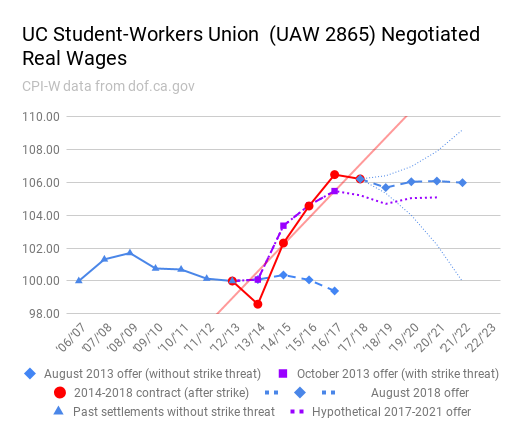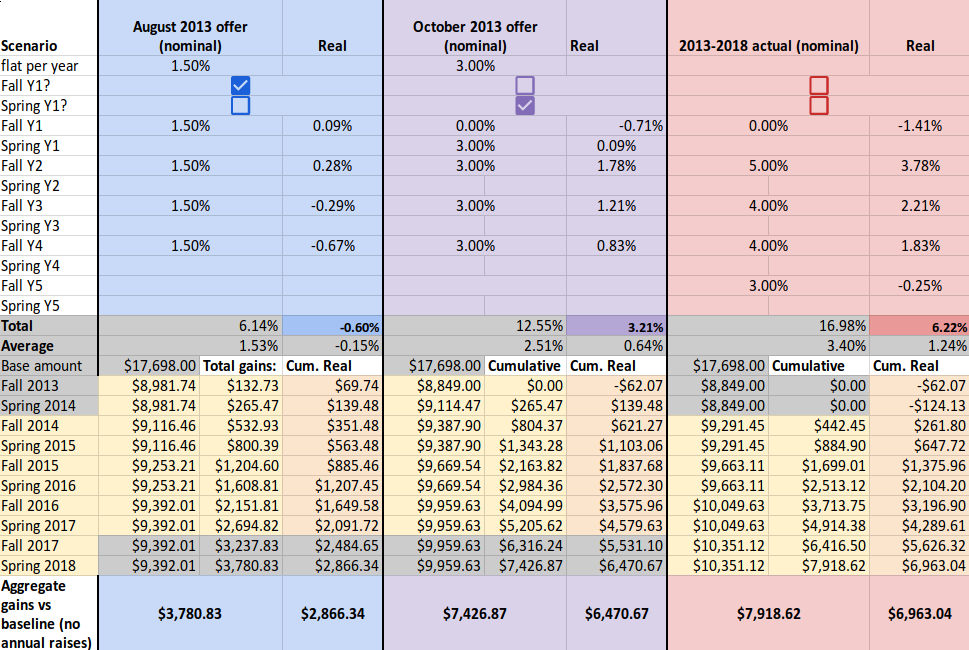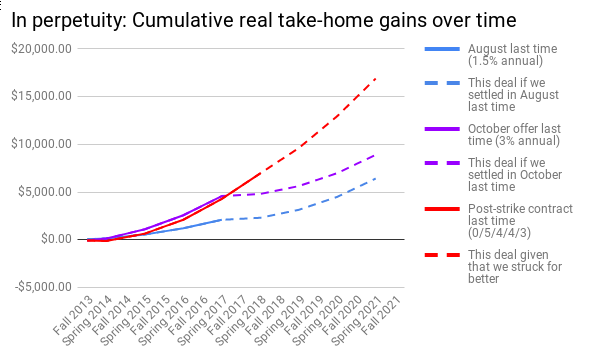An in-depth look at wage increases the contract, and comparing to the previous one, responding to some of the criticisms
Cost of living matters and is missing from the “yes” case
One of the highest priorities members expressed in the bargaining survey at the beginning of the year was a supplement for housing. Management argued that this should fall under wages and not be its own supplement. This might be ok – if the wage offer were enough to keep up with cost of living. But cost of living has gone up so much in the past few years, that 3% annual raises is actually more comparable to the 1.5% annual raises UCOP offered in August last time around.

Cumulative analysis doesn’t change the conclusion
This table shows the total cumulative take-home wage increases each semester in each of the three possible offers we could have taken last time. The tradeoff between potentially losing a semester of wages vs. being able to win more in a strike does matter, but only comparing the offer from UCOP in October to the eventual contract. There is no mathematical case to be made for settling in summer rather than extending into fall.

There is some inherent distortion in comparing five years to four. It is correct to say we should look at the last contract as 0/5/4/4/3 rather than simply 5/4/4/3. But it would be no less misleading to treat it as 0/5/4/4 for the sake of comparing it to 1.5/1.5/1.5/1.5 or 3/3/3/3. We don’t know what our 2017-2018 wages would have been if we had settled for a 2013-2017 contract. The summations in this table consider the cumulative losses and gains of each 4-year contract over a 5-year interval, 0/5/4/4/3 to 3/3/3/3/0. Since the base pay is subtracted out, this is a comparison of four years to four years that still penalizes the 5/4/4/3 for the leading 0.
Base rate does matter, in perpetuity
It is tempting to compare a hypothetical 3/3/3/3/3 contract to 0/5/4/4/3, so that they are both five years. But realistically, if we’d taken 3/3/3/3 in 2013, we would be in a similar position to where we are now, except in 2017: considering a new multi-year contract, and being encouraged to compare the nominal amounts instead of looking at cost of living. It is likely that management would have offered a similar proposal in 2017, and we might be making similar projections. Considering that counterfactual over all eight years, from 2013-2021, it becomes clear that the higher base rate at the end of the contract we won after striking, does make a difference many years down the road, which was Amanda Armstrong’s basis for claiming that even in 2013-2018, 0/5/4/4/3 was a better deal in the long term.

Our union represents all student-workers, and this contract will govern student-workers who are not yet members but will become members during the next four years.
2 thoughts on “Real Talk on Real Wages”